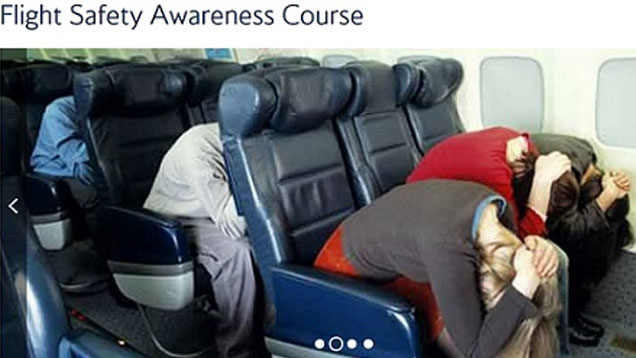We’re probably all familiar with the brace position — that curled-up posture passengers are advised to adopt in the event of an emergency plane landing. The details of the proper way to get into that position, however, might not be universally known.
View from the Wing points out some tips learned in a British Airways flight safety awareness course: keep your feet flat on the ground, bend forward as far as possible, and keep your head down. You probably already know that drill. Here’s an interesting part though:
Your dominant hand goes on the back of your head. Protect that hand by placing the other hand over it. Do not interlock fingers. The goal is to ensure that the bones in the stronger hand aren’t broken so you can eventually unbuckle the seatbelt.
US airlines’ brace positions recommendations are a bit different, according to Wikipedia. Passengers are advised to put their hands on the back of the seat in front of them rather than on their heads, but still the advice is not to interlace your fingers, but rather hold one wrist. (If there’s no seat in front, either grab your ankles or put your hands under your legs while grabbing the opposite forearm.)
Although there are myths and conspiracy theories about the brace position, the UK Telegraph reports that it can save lives.
How to Survive a Plane Crash [View from the Wing]

Comments